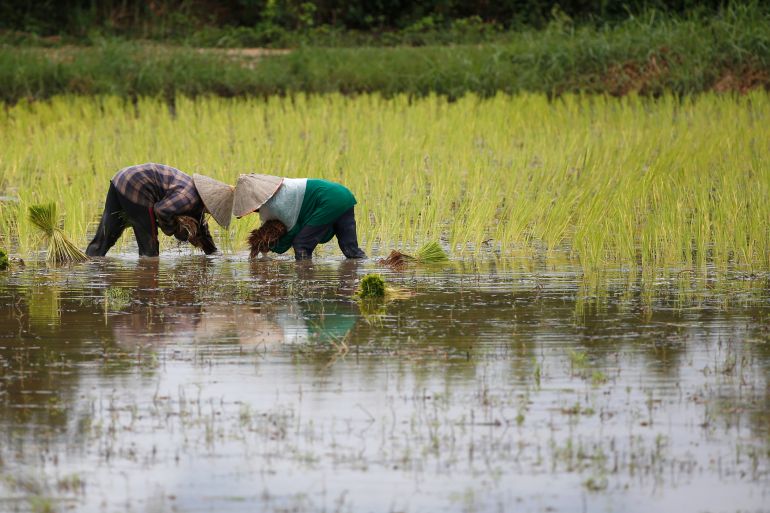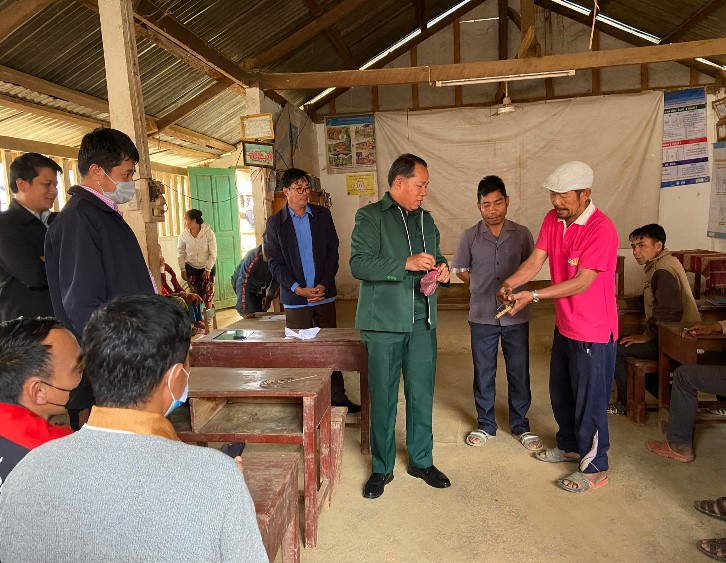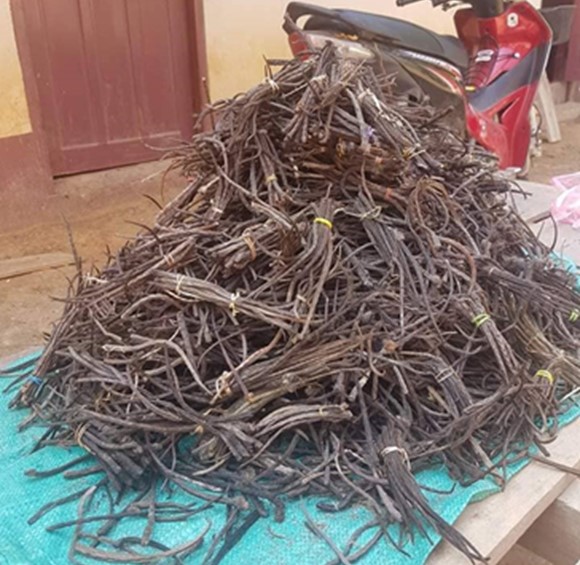Laos farmers turn to game theory in bid to outsmart rats
Experts say approach, in which villagers come together to hunt the pests, could have applications far beyond rat-catching.

For more than a decade, Laos has been confronted with an escalating rat problem as the rodents chomp their way through rice, the country’s main cash crop and staple food.
Described by farmers as a “sea of rats,” the vermin chew through at least 20 percent of the country’s annual rice harvest, placing added stress on household finances and food security in what is already one of Southeast Asia’s poorest nations. According to the United Nations World Food Programme, one in five Laotians were already experiencing food insecurity even before the COVID-19 pandemic, while one in three children is chronically malnourished.
Keep reading
list of 4 itemsWhy are British farmers pleading for a universal basic income?
Why are some US food producers using antibiotics in meat again?
Photos: Chocolate prices rise as West Africa’s cocoa crisis deepens
In wealthier countries, rodenticides like bromadiolone that prevent blood from clotting are used to combat plagues of rats and mice. But they also poison non-target species, soil, water and sometimes the farmers who apply them, and can be prohibitively expensive.
But a team of researchers from the National University of Laos and Australia’s Monash University have discovered a much simpler, cheaper and environmentally friendly solution that utilises existing indigenous rodent hunting tools and know-how: an economic game that pools together the efforts of villagers, and rewards those who kill or capture the most rats.
“If one farmer was killing rats and the others weren’t, the rats would just continue to populate neighbouring farms, but we knew we could get better results if they worked together,” said Paulo Santos, a senior lecturer of economics at Monash University. “So the game was designed to inspire collective action and framed as a pest management activity, the effectiveness of which depended on the decisions of others.”
More rice, more protein
Based on game theory – a branch of mathematics that looks at strategies for dealing with competitive situations that has been applied in fields as diverse as business and war – the concept was trialled in 2018 and 2019 at 36 villages in Luang Prabang Province, one of the most rat-affected areas of northern Laos.

“Rats are the pests that cause the most damage in Luang Prabang because they attack the whole chain of agricultural production, from planting, to harvesting, to storage,” said Fue Yang, a researcher at the National University of Laos who led the field team that supervised the trial. “Normally farmers use a combination of pesticides, sticks and homemade traps inside which food is placed to lure rodents. But these methods have not been effective in reducing rodent populations.”
Farmers in villages come together for one day a month throughout the trial to eradicate rodents in a particular area. This mimics the behaviour of killer whales and other wildlife species that work together to isolate, tire out and immobilise their prey, and builds from an older ‘red tail’ initiative in which NGOs paid hunters for every rat tail they produced.
Every member of the hunting group benefitted from an increased supply of protein as rats are also a food source in Laos, while every farmer benefitted by having more rice to eat or sell. But the most successful hunters in each village benefitted even more by making a name for themselves in the community and receiving small cash prizes donated by the Australian Centre for International Agricultural Research.
Published in PNAS, the journal of the National Academy of Sciences in Washington, DC,, the trial resulted in 30 percent more rice being produced than in previous seasons and 20 percent more rice than was grown in control villages. This added an average of 80kg of unmilled rice per household per year – the equivalent of two weeks’ supply of the key carbohydrate.
“The game showed that if farmers contribute collectively to rodent control, it benefits them in the long term,” Fue says.

Adds Kun Sesophon, director of the agriculture and forestry office in the Viengkham district of Luang Prabang: “Without this project, we would have experienced significant losses of rice due to rodent damage.”
Replicating the game
The question now is whether the results can be sustained without the financial incentives provided by NGOs, and whether the approach can be replicated in other parts of Laos and the developing world.
Professor Silinthone Sacklokham, director of the SEAMEO Regional Centre for Community Education Development in Laos, believes the game is sustainable. “The rodent hunting competition is simple and inexpensive. It is uncomplicated and requires low financial investment. We hope that in the future, villagers will continue these rodent hunting activities,” she said.
But Chitpasong Kousonsavath, an educator in agricultural economics at the National University of Laos who helped collect and collate data collection for the trial at villages rife with children with bloated bellies, says red tape in Laos is likely to make replicating the trial challenging.
“Practically, I think it is scalable and modifiable in other provinces with rodent problems because money does not have to be offered as a prize. Participants can be compensated with rice or other foodstuffs that are available in the local context so that it is not too difficult for other communities to adopt,” she said. “But things are never simple in Laos. It took us a really long time, more than a year, just to get the permits for the trial. We started working on this back in 2015.”
Kousonsavath also questions assumptions made about connecting reducing rat populations to larger rice yields and food security.
“You cannot directly translate economic improvement to food security as the latter is quite complicated. Food security is influenced by many different variables like consumption patterns, cultural nuances and connections with marketplaces. And what exactly is it? Are we talking about security in carbohydrate intake? Security in protein? Or is it security in micronutrients that are important for the development of kids?”
Nevertheless, Santon at Monash University believes the trial, regarded as the first of its kind in the world, is scalable in agricultural communities around the world and not just in the control of rats.
“This work is important because the game can be applied to any other region or issues where cooperation is needed like water management, forest management, waste or garbage collection,” he said.